By: Bluma Gordon, Lubicom Marketing Staff
If you ever tasted a perfect pie, you know that the dough can make the difference between lackluster leftovers and a heavenly dessert. And while you might think you’re unlucky for not inheriting Grandma’s baking skills, the key to creating perfect pie is less about counting your lucky stars and more about getting down to the science of dough. With these easy tips, you’ll be able to make party-worthy, melt-in-your-mouth pie dough.
1. Gather the Right Gear
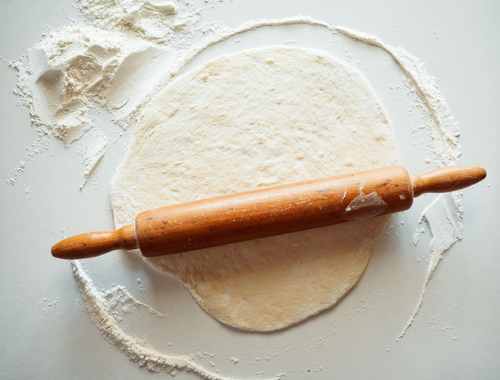
Prepare tools that will help you work with your dough, not against it. To start on the right track, grab these essentials.
a) Food processor:
Most experts will tell you it’s the best tool for swiftly and evenly incorporating fats (like butter, margarine, and shortening) with dry ingredients.
b) Rod-shaped rolling pin:
You’ll want to use it to roll and smooth the dough into an even circle once you finish mixing.
c) Glass-bottom plate:
Ditch shiny or greased pans if you don’t want a soggy-boggy pie bottom. Plus, a glass plate will let you take a peek at the dough while it’s in the oven so you can check if it’s ready.
2. Don’t Skimp on Ingredients
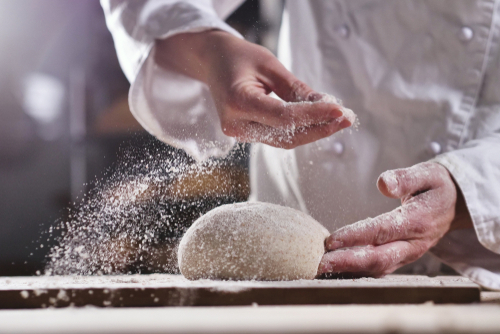
With pie dough, what you put in is what you get out. Embrace your unconventional streak when making cholents and stews, but be a stickler about following your pie recipe.
a) Don’t substitute fats for fats:
Shortening, butter, and margarine will create slightly different consistencies. If you can help it, use the fats the recipe calls for.
b) Use pastry flour:
All-purpose flour has higher levels of gluten and will produce a tougher dough. Use pastry flour instead.
3. Say “Yes” to a Recipe with Vodka
I know— the thought of using vodka makes you balk. Vodka is actually a favorite ingredient in pie-dough among top chefs. Alcohol doesn’t contribute to the formation of gluten, which means more flaky goodness in every bite. And don’t worry: No one will guess that you added vodka —not even Grandma.
4. Keep the Dough Cool
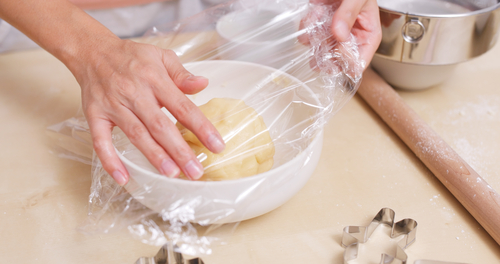
The goal is to prevent the fats from melting so they create those oh-so-delicious air pockets in the crust once they bake.
Here are some quick tips to help keep your dough nice and chilled:
a) Use ice-cold water (and/or vodka):
For a quick ice-cold water fix, throw ice and water in a bowl, add a pinch of salt, and mix until the water reaches the right temperature.
b) Use cold butter, margarine, or shortening:
Don’t wait for the fats to soften. Just be sure to cut them into small chunks so they mix well with the dough.
c) Refrigerate:
After you mix the dough, wrap it in plastic wrap and chill for at least half-an-hour. Chill the prepared dough again for 15 minutes before you put it in the oven. If you feel your dough getting warm as you work with it, put it back in the fridge for another few minutes.
5. Don’t Overwork your Dough
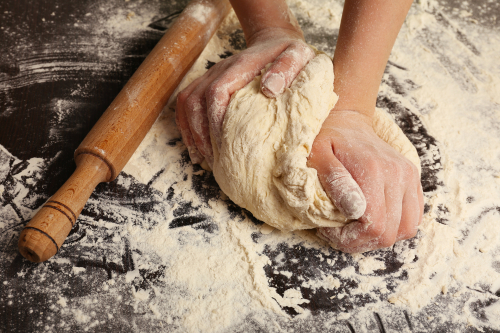
Overworked dough toughens the gluten strands and creates a chewy, hot-pretzel-like texture. Mix your dough until it’s just combined. Hint: When you start seeing pea-sized lumps in your dough, you know you’ve reached the right texture.
6. Bake It Right
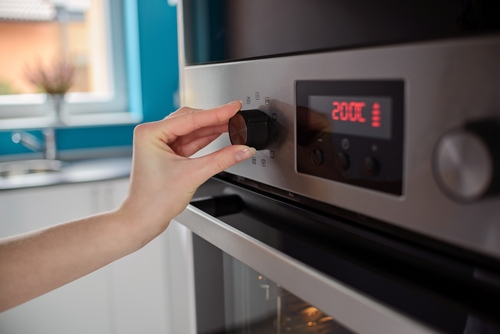
a) It’s super important to keep the oven piping hot so you can get the right texture. Don’t skip the preheating phase, ever. And, if a recipe directs you to first set the oven on high before lowering the temperature—well, follow your orders.
b) Bake the pie on the lower rack, closer to the heating element. This helps prevent your masterpiece from getting soggy-pie syndrome.
7. Mind your Dough
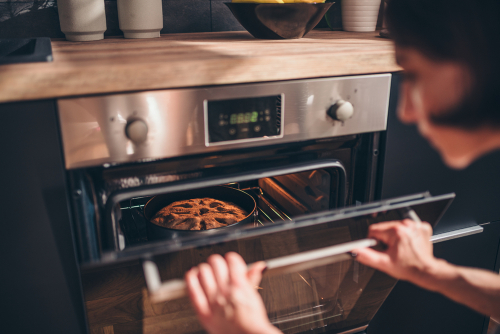
You’re almost done, but don’t do any fist-pumping just yet. You’ll need to watch your dough as it bakes.
a) Add foil to the edges:
If you sometimes have a problem with your edges getting dry or over-baked, place strips of aluminum foil around the edges of the dough to prevent them from burning.
b) Check for the right color:
Before you remove your pie from the oven, make sure the dough is the right color. The pie dough should be shades of honey or amber. A paler dough probably could use a few more minutes in the oven; darker shades means you’ve over-baked it this time.
8. Add the Finishing Touches
Congrats! Your pie is out of the oven and looks guest-worthy—almost. Gloss it up by combining a teaspoon of milk, water, or cream, plus some coarse sugar. Different ingredients create slightly varied shades and levels of shine, so you might want to experiment for fun on an extra strip of dough.
Though making the perfect pie dough is fairly simple, don’t get discouraged if it takes you a few tries to get it Goldilocks-style perfect. Enjoy your pie—but don’t expect it to stick around for too long!





